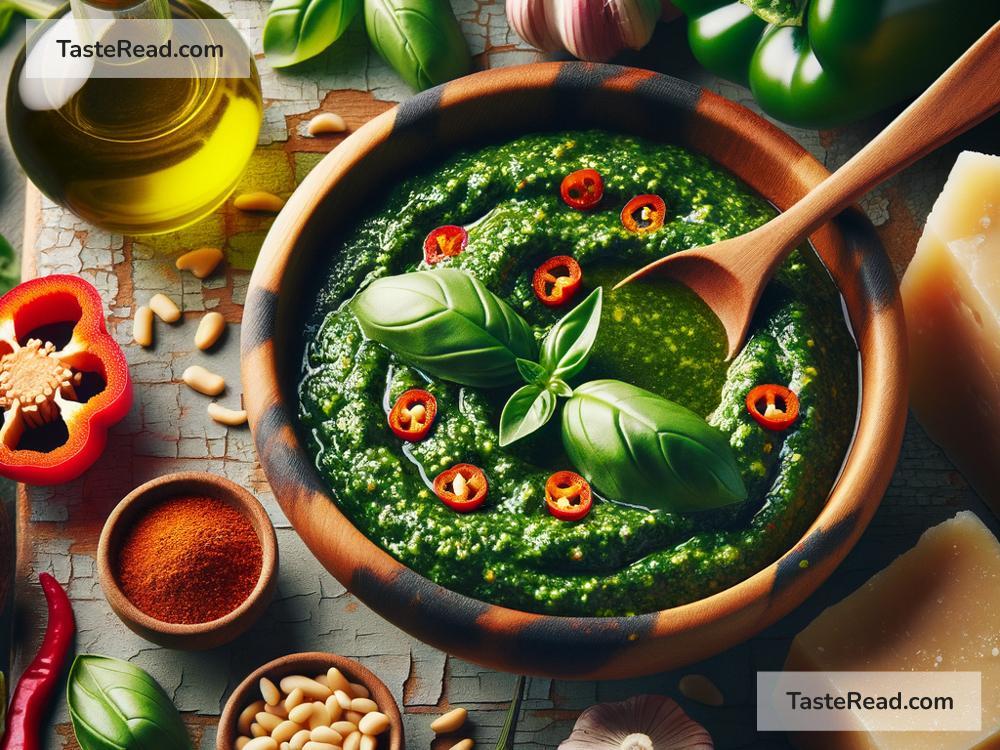Exploring the Bold Pepper and Basil Pairings in Italian Pesto
Italian cuisine is loved worldwide for its fresh ingredients, flavorful combinations, and simple yet satisfying dishes. One standout sauce that embodies the spirit of Italy’s culinary genius is pesto. Made with fresh basil, garlic, pine nuts, Parmesan cheese, and olive oil, traditional pesto creates bold flavors that excite the palate. However, what happens when you add a dash of pepper to this classic recipe? Today, we explore an unexpected twist—combining pepper with basil in pesto to introduce bold, unique flavor pairings that elevate your Italian dishes to the next level.
What is Pesto?
Before diving into new variations, let’s revisit the basics. Pesto is a traditional sauce originating from Italy, specifically the Liguria region. The name “pesto” comes from the Italian word “pestare,” which means “to crush” or “to pound.” This describes how the ingredients are traditionally mashed together with a mortar and pestle, creating a vibrant green sauce perfectly balanced between fragrant and nutty flavors.
The star ingredient in pesto is fresh basil, complemented by garlic, Parmesan cheese, olive oil, and pine nuts. Each ingredient plays an important role: basil brings freshness, garlic adds depth, Parmesan creates a creamy texture, and pine nuts provide nuttiness. Olive oil ties everything together. The result is a versatile sauce that can be used on pasta, spread on bread, or drizzled on salads and grilled vegetables.
Why Add Pepper to Pesto?
While traditional pesto is delicious on its own, many chefs and home cooks are experimenting with bold additions to make this classic recipe even more exciting. One unexpected ingredient that works surprisingly well is pepper. Pepper, whether black, white, or red, provides a slightly spicy, earthy kick that cuts through the creamy richness of Parmesan cheese and enhances the herbal freshness of basil.
Adding pepper to pesto introduces complexity to the dish. It awakens the taste buds and makes each bite more exciting, especially when paired with other ingredients like roasted vegetables, seafood, or meat. On top of enhancing flavor, pepper adds visual interest when using colorful varieties, such as pink peppercorns or crushed red pepper flakes.
Types of Pepper You Can Add to Pesto
When experimenting with adding pepper to pesto, the type of pepper you choose matters. Here are a few varieties to consider:
1. Black Pepper
Black pepper is the most common type and adds a warm, earthy sharpness to pesto. Freshly ground black pepper is preferred for its intense aroma. When added sparingly, black pepper enhances the existing flavors without overpowering them.
2. White Pepper
White pepper is smoother and milder than black pepper but still delivers depth. It often works well if you’re looking for a subtler spice profile. White pepper is commonly used in creamy dishes and pairs beautifully with Parmesan cheese in pesto.
3. Crushed Red Pepper Flakes
If you like heat, crushed red pepper flakes are perfect for spicing up your pesto. They add a fiery kick without overwhelming the delicate basil notes. This variation works particularly well in pesto paired with grilled meats or tossed with pasta.
4. Pink Peppercorns
Pink peppercorns are milder and slightly fruity compared to other peppers. They introduce a hint of sweetness to pesto and pair beautifully with nutty pine nuts and cheese. Their rosy hue also adds visual charm.
5. Green Peppercorns
Green peppercorns are fresh and slightly zesty. These can be crushed and mixed into pesto for a gentler spice that doesn’t overshadow the other flavors.
How to Make Pepper-Basil Pesto
Let’s create a simple pepper-basil pesto recipe you can try at home!
Ingredients:
- 2 cups fresh basil leaves
- 2 cloves garlic
- ⅓ cup pine nuts
- ½ cup grated Parmesan cheese
- ⅓ cup olive oil
- 1 teaspoon freshly ground black pepper (or your preferred pepper)
- Salt to taste
Instructions:
- Wash the basil leaves thoroughly and pat them dry.
- Add the basil, garlic, pine nuts, and Parmesan cheese to a food processor or blender. Pulse a few times to chop the ingredients.
- Slowly drizzle in olive oil while blending until the mixture reaches your desired consistency (smooth or slightly chunky).
- Add freshly ground black pepper and a pinch of salt. Blend again briefly to mix the spices evenly.
- Taste and adjust seasoning if necessary.
Enjoy your pepper-basil pesto with pasta, bread, or as a topping for grilled vegetables, chicken, or fish.
Creative Pairings for Pepper-Basil Pesto
Now that you’ve mastered the recipe, here are some exciting pairings to make the most of your peppery pesto:
1. Grilled Shrimp
Drizzle pepper-basil pesto over grilled shrimp to create a zesty, refreshing appetizer perfect for summer.
2. Vegetable Medley
Pair your pesto with roasted zucchini, bell peppers, and eggplant to add complexity to naturally sweet vegetables.
3. Flatbread Pizza
Spread the pesto on flatbread, then layer it with tomatoes, mozzarella cheese, and a sprinkle of crushed red pepper flakes for a spicy twist.
4. Stuffed Mushrooms
Use pepper-basil pesto as a stuffing for mushrooms, topped with breadcrumbs for a crunchy bite.
5. Creamy Pesto Pasta
Combine pepper-basil pesto with cream to create a spicy and creamy pasta sauce that’s rich, bold, and comforting.
Conclusion
The addition of pepper to traditional basil pesto transforms this Italian classic into a bold, modern sauce that surprises and delights the taste buds. Experimenting with different types of pepper lets you explore a variety of spice levels and flavor profiles, creating endless opportunities for creative pairings in your kitchen. Whether you’re preparing a casual dinner or hosting friends for an Italian-themed meal, pepper-basil pesto is sure to impress. So grab some basil, crush your favorite pepper, and start experimenting with this exciting twist on an old favorite!


